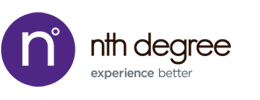
Summer is quickly coming to an end and with that, college graduates are starting to face reality and are polishing their resumes in anticipation of applying for their first “real” jobs. It’s likely this group of millennials is eager and full of expectations as to what this first job out of college will look like (and yes, images of ping pong tables and weekly happy hours are likely dancing in their heads).
And while college graduates are looking to find new work, baby boomers are staying put. 65 is the new 55 for this generation and retirement is being pushed back to 70 and beyond. In 2017, 52% of Baby Boomers plan to delay retirement according to the PWC Employee Financial Wellness Survey; one of the reasons cited for this delay is “…not having saved enough.”
So what does that mean for the professional world? It means making room for a whole new host of wide-eyed and green employees to fill those open entry-level roles and at the same time, adjusting the work environment to leverage the skills of all generations.
Here are a few essential tips to keep everyone happy, engaged and working together as a true team:
1. Age is just a number.
If too much emphasis is placed on age and tenure, the balance of the working relationship can be negatively affected. Think a boss that is 15 years younger than you or let’s say, a mature employee starting a new career path. The important thing here is to focus on the skills and the value the person brings regardless of age or tenure with the company. It’s best if this methodology comes from the top down with corporate programs that reward positive behavior and that carve out a path for growth within the company no matter age or station.
2. Never stop learning.
There is something to be said for continuing to better oneself both personally and professionally through formal training, attending conferences or #tradeshows and participating in workshops, etc. What’s more? Every generation has unique styles in terms of how they communicate, work and live – offering training specific to these generational norms can help your team understand and appreciate differences. This all plays into fostering an environment that all generations will enjoy and thrive in. This is essential for projects – and the workplace - to run smoothly.
3. Advisor, mentor, guru…
Whatever the current catchphrase is, assigning new team members a person to turn to for guidance is certainly worthwhile. Even if you don’t have a formal program in place, a simple approach such as assigning a work buddy helps ease your new hire’s transition and gives him/her a person to turn to with questions. Even better – strategically pairing people of different generations together can get everyone started on the right foot.
I know this goes against #1 a little, but your tenured employees have a ton to offer younger inexperienced team members. The catch is that it is up to team leaders and managers to help nurture two-way learning so that fresh skills and perspectives are not overlooked. Thus, you never know which person is the master and which is the grasshopper.
4. Put the sticky notes down.
If you’ve ever worked in an office, you are familiar with passive aggressive behavior and the art of the sticky note message. It goes something like this: To the person who [insert verb + insufferable behavior + phony pleasantry]. One could spend hours perusing the web with some of the best – here is one of my favorites.
This behavior is likely exacerbated by different working styles and personality quirks you will find among the generations. The solution – create an environment with guided and open communication. This could be monthly town halls or 1:1 meetings with managers and team leaders to discuss any issues and find a healthy solution. Your company’s culture should be fluid – allowing new expectations, preferences, likes and dislikes to have a voice. Whatever the tactic, just making it clear to your team that it’s ok to communicate both positives and negatives can be helpful.
And if all else fails, just ban sticky notes – I jest!
5. Unplug.
This can be scary for every generation – but sending emails or communicating with Slack is not always the best approach for real connection. And no, adding your headshot to your communication tools doesn’t count as face-to-face. From volunteering as a workplace to attending a special event as a team – the opportunities to create powerful activities that help everyone engage and connect “IRL” are endless. And as an #eventprof myself, I can’t help but throw the power of face-to-face engagement in my blog post. There are so many activities you can plan to help your team find commonalities, gain understanding of one another and ultimately be better collaborators and co-workers.
Another great idea for better 1:1 connections is to create a mandatory no email afternoon once a month. The concept is that everyone has to communicate face-to-face or at the very least by phone. This notion unnerves me too, but even a marketer like me that lives in a digital land is willing to give it a try!
How do you and your team manage working with several generations under one roof? We’d love to hear from you!

 404-296-5282
404-296-5282 3237 Satellite Blvd
3237 Satellite Blvd